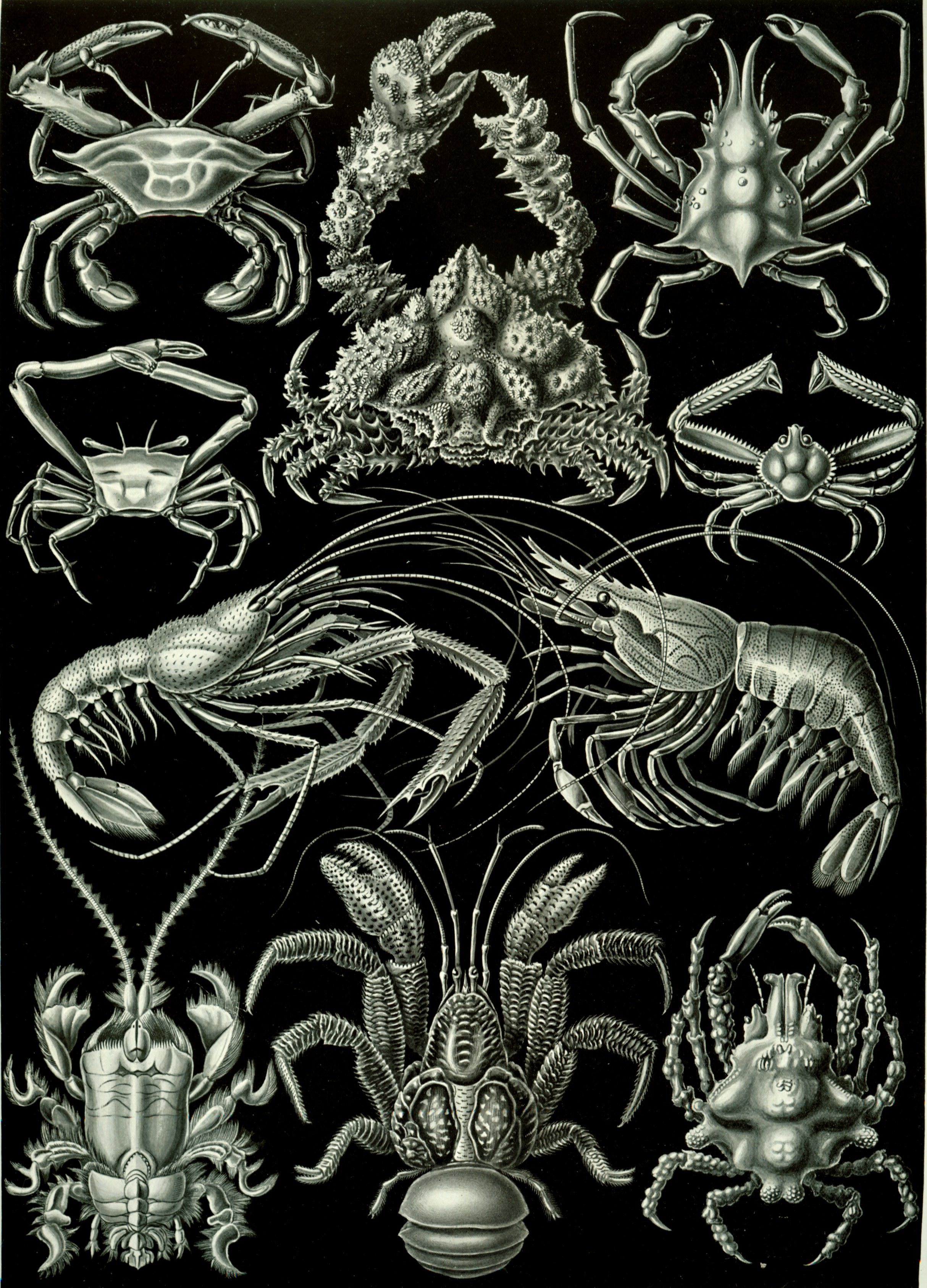|
Liomera
''Liomera'' is a genus of crabs in the family Xanthidae Xanthidae is a family (biology), family of crabs known as gorilla crabs, mud crabs, pebble crabs or rubble crabs. Xanthid crabs are often brightly coloured and are highly poisonous, containing toxins which are not destroyed by cooking and for wh .... It contains the following species: References Xanthidae Decapod genera Taxa named by James Dwight Dana {{Xanthoidea-stub ... [...More Info...] [...Related Items...] OR: [Wikipedia] [Google] [Baidu] |
Xanthidae
Xanthidae is a family (biology), family of crabs known as gorilla crabs, mud crabs, pebble crabs or rubble crabs. Xanthid crabs are often brightly coloured and are highly poisonous, containing toxins which are not destroyed by cooking and for which no antidote is known. The toxins are similar to the tetrodotoxin and saxitoxin produced by Tetraodontidae, puffer fish, and may be produced by bacteria in the genus ''Vibrio'' living in symbiosis with the crabs, mostly ''Vibrio alginolyticus, V. alginolyticus'' and ''Vibrio parahaemolyticus, V. parahaemolyticus''. Classification Many species formerly included in the family Xanthidae have since been moved to new families. Despite this, Xanthidae is still the largest crab family in terms of species richness, contanining the following subfamilies and genera: *Actaeinae **''Actaea (crab), Actaea'' **''Actaeodes'' **''Actaeops'' † **''Allactaea'' **''Eoxanthops'' † **''Epiactaea'' **''Epiactaeodes'' **''Forestiana'' **''Gaill ... [...More Info...] [...Related Items...] OR: [Wikipedia] [Google] [Baidu] |
James Dwight Dana
James Dwight Dana Royal Society of London, FRS FRSE (February 12, 1813 – April 14, 1895) was an American geologist, mineralogist, volcanologist, and zoologist. He made pioneering studies of mountain-building, volcano, volcanic activity, and the origin and structure of continents and oceans around the world. His zoological author abbreviation is Dana. Early life and career Dana was born February 12, 1813, in Utica, New York. His father was merchant James Dana (1780–1860) and his mother was Harriet Dwight (1792–1870). Through his mother he was related to the Dwight New England family of missionaries and educators including uncle Harrison Gray Otis Dwight and first cousin Henry Otis Dwight. He showed an early interest in science, which had been fostered by Fay Edgerton, a teacher in the Utica high school, and in 1830 he entered Yale College in order to study under Benjamin Silliman the elder. Graduating in 1833, for the next two years he was teacher of mathematics to midshi ... [...More Info...] [...Related Items...] OR: [Wikipedia] [Google] [Baidu] |
Crab
Crabs are decapod crustaceans of the infraorder Brachyura (meaning "short tailed" in Greek language, Greek), which typically have a very short projecting tail-like abdomen#Arthropoda, abdomen, usually hidden entirely under the Thorax (arthropod anatomy), thorax. Their exoskeleton is often Sclerotization, thickened and hard. They generally have Arthropod leg, five pairs of legs, and they have "Pincers (tool), pincers" or "claws" on the ends of the frontmost pair, scientifically termed the ''chelae''. They are present in all the world's oceans, Freshwater crab, in freshwater, and Terrestrial crab, on land, often hiding themselves in small crevices or burrowing into sediment. Crabs are omnivores, feeding on a variety of food, including a significant proportion of Algae eater, algae, as well as Detritivore, detritus and other invertebrates. Crab meat, Crabs are widely consumed by humans as food, with over 1.5 million tonnes Crab fisheries, caught annually. True crabs first appeared ... [...More Info...] [...Related Items...] OR: [Wikipedia] [Google] [Baidu] |
Raffles Bulletin Of Zoology
''The Raffles Bulletin of Zoology'' is a peer-reviewed open-access scientific journal published by the Lee Kong Chian Natural History Museum at the National University of Singapore. Overview It covers the taxonomy, ecology, and conservation of Southeast Asian fauna Fauna (: faunae or faunas) is all of the animal life present in a particular region or time. The corresponding terms for plants and fungi are ''flora'' and '' funga'', respectively. Flora, fauna, funga and other forms of life are collectively .... Supplements are published as and when funding permits and may cover topics that extend beyond the normal scope of the journal depending on the targets of the funding agency. It was established as the ''Bulletin of the Raffles Museum'' in 1928 and renamed ''Bulletin of the National Museum of Singapore'' in 1961, before obtaining its current title in 1971. See also * List of zoology journals References Zoology journals Biannual journals Open access journals En ... [...More Info...] [...Related Items...] OR: [Wikipedia] [Google] [Baidu] |
Decapod Genera
The Decapoda or decapods, from Ancient Greek δεκάς (''dekás''), meaning "ten", and πούς (''poús''), meaning "foot", is a large order (biology), order of crustaceans within the class Malacostraca, and includes crabs, lobsters, crayfish, Caridea, shrimp, and Dendrobranchiata, prawns. Most decapods are scavengers. The order is estimated to contain nearly 15,000 extant species in around 2,700 genera, with around 3,300 fossil species. Nearly half of these species are crabs, with the shrimp (about 3,000 species) and Anomura including hermit crabs, king crabs, porcelain crabs, squat lobsters (about 2500 species) making up the bulk of the remainder. The earliest fossils of the group date to the Devonian. Anatomy Decapods can have as many as 38 appendages, arranged in one pair per body segment. As the name Decapoda (from the Greek language, Greek , ', "ten", and , '':wikt:-pod, -pod'', "foot") implies, ten of these appendages are considered legs. They are the pereiopods, foun ... [...More Info...] [...Related Items...] OR: [Wikipedia] [Google] [Baidu] |


